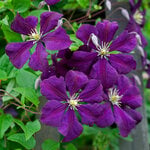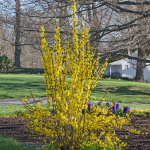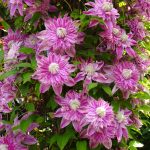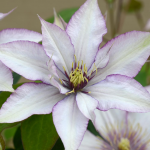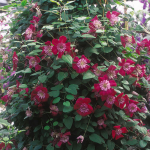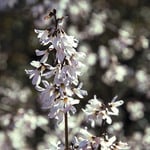Product Details
The foliage of this hardy Eastern Arborvitae is dense and dark green year-round, showing great resistance to winter burn that plagues less vigorous varieties. Each plant has a rather narrow, columnar form making it an excellent specimen plant. A Proven Winners®/Color Choice® variety. 'Art Boe' PP 22,174
Although small, this genus of six evergreen Conifers native to North America and East Asia is important for timber and ornamental trees and shrubs. A great number of Thuja varieties are available, selected for unusual form, color, texture, or growth rate. Grow in average to moist, well-drained soil. For more information, click on Growing Guide.
Shipping
HOW PLANTS ARE SHIPPED
The size of the plants we ship has been selected to reduce the shock of transplanting. For some, this means a large, bareroot crown. Others cannot travel bareroot or transplant best if grown in containers. We ship these perennials and annuals in 1 pint pots, except as noted. We must point out that many perennials will not bloom the first year after planting, but will the following year, amply rewarding your patience. We ship bulbs as dormant, bare bulbs, sometimes with some wood shavings or moss. Shrubs, Roses, vines, and other woody plants may be shipped bareroot or in pots. The size of the pot is noted in the quick facts for each item.
WHEN WE SHIP
We ship our bulbs and plants at the right time for planting in your area, except as noted, with orders dispatched on a first-come, first-served basis by climate zone. We also ship a wide range of containers and planters, tools, supplies, fertilizers, garden wear, garden decor items, as well as indoor decorations like wreaths and dried bouquets when available. Estimated dates for shipping are indicated in the green Shipping Details box for each item. Please supply a street address for delivery. Kindly contact us with two weeks notice, if you'll be away at the expected time of delivery.
OUR GUARANTEE
We guarantee to ship plants that are in prime condition for growing. If your order is damaged or fails to meet your expectations, we will cheerfully replace or refund it. Please contact our Customer Service Department at 1-800-503-9624 or email us at [email protected]. Please include your order number or customer number when contacting us.
Reviews
There are no reviews yet. Be first to Write a Review.
Growing guide
Latin Name Pronunciation: thoo'yuh
Although a small genus of evergreen Conifers native to North America and East Asia, Thuja is important as a source of timber and ornamental trees and shrubs. A great number of varieties are available, selected for unusual form, color, texture, or growth rate, and are useful as specimen trees or in hedges.
Light: Full sun.
Soil: Prefers average to moist, well-drained soil.
Watering: The key to getting your new shrub or tree off to a good start is moisture. Water thoroughly after planting, and keep a close eye on the plant over the following week. Then, give it a good soaking once a week during summer, unless rainfall is plentiful (more than 1″ per week). Established plants can generally get by on less water, but most grow best if the soil remains evenly moist.
Fertilizer: We recommend against fertilizing at planting time and during the first growing season in your garden. Plants need time to settle in before being pushed to grow. Most established plants grow best if fertilized with a light hand. Here at the Farm, we fertilize our specimen trees just once—in early spring—with a light but even coverage of a balanced, granular fertilizer.
Pruning: Prune in late winter or early spring to remove any browned growth. Heavy pruning is seldom needed.

